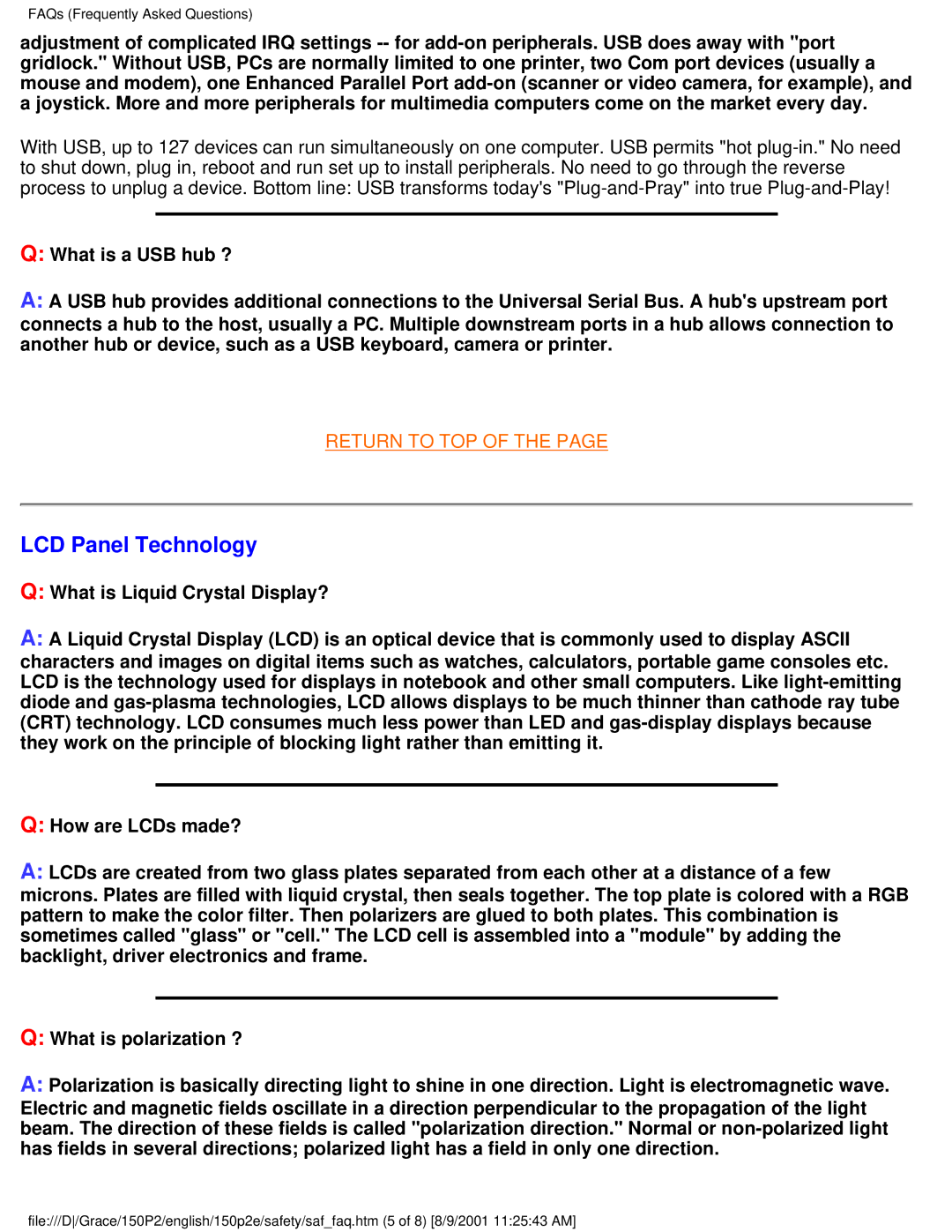
FAQs (Frequently Asked Questions)
adjustment of complicated IRQ settings
With USB, up to 127 devices can run simultaneously on one computer. USB permits "hot
Q:What is a USB hub ?
A:A USB hub provides additional connections to the Universal Serial Bus. A hub's upstream port
connects a hub to the host, usually a PC. Multiple downstream ports in a hub allows connection to another hub or device, such as a USB keyboard, camera or printer.
RETURN TO TOP OF THE PAGE
LCD Panel Technology
Q:What is Liquid Crystal Display?
A:A Liquid Crystal Display (LCD) is an optical device that is commonly used to display ASCII
characters and images on digital items such as watches, calculators, portable game consoles etc. LCD is the technology used for displays in notebook and other small computers. Like
Q:How are LCDs made?
A:LCDs are created from two glass plates separated from each other at a distance of a few
microns. Plates are filled with liquid crystal, then seals together. The top plate is colored with a RGB pattern to make the color filter. Then polarizers are glued to both plates. This combination is sometimes called "glass" or "cell." The LCD cell is assembled into a "module" by adding the backlight, driver electronics and frame.
Q:What is polarization ?
A:Polarization is basically directing light to shine in one direction. Light is electromagnetic wave.
Electric and magnetic fields oscillate in a direction perpendicular to the propagation of the light beam. The direction of these fields is called "polarization direction." Normal or
file:///D/Grace/150P2/english/150p2e/safety/saf_faq.htm (5 of 8) [8/9/2001 11:25:43 AM]
